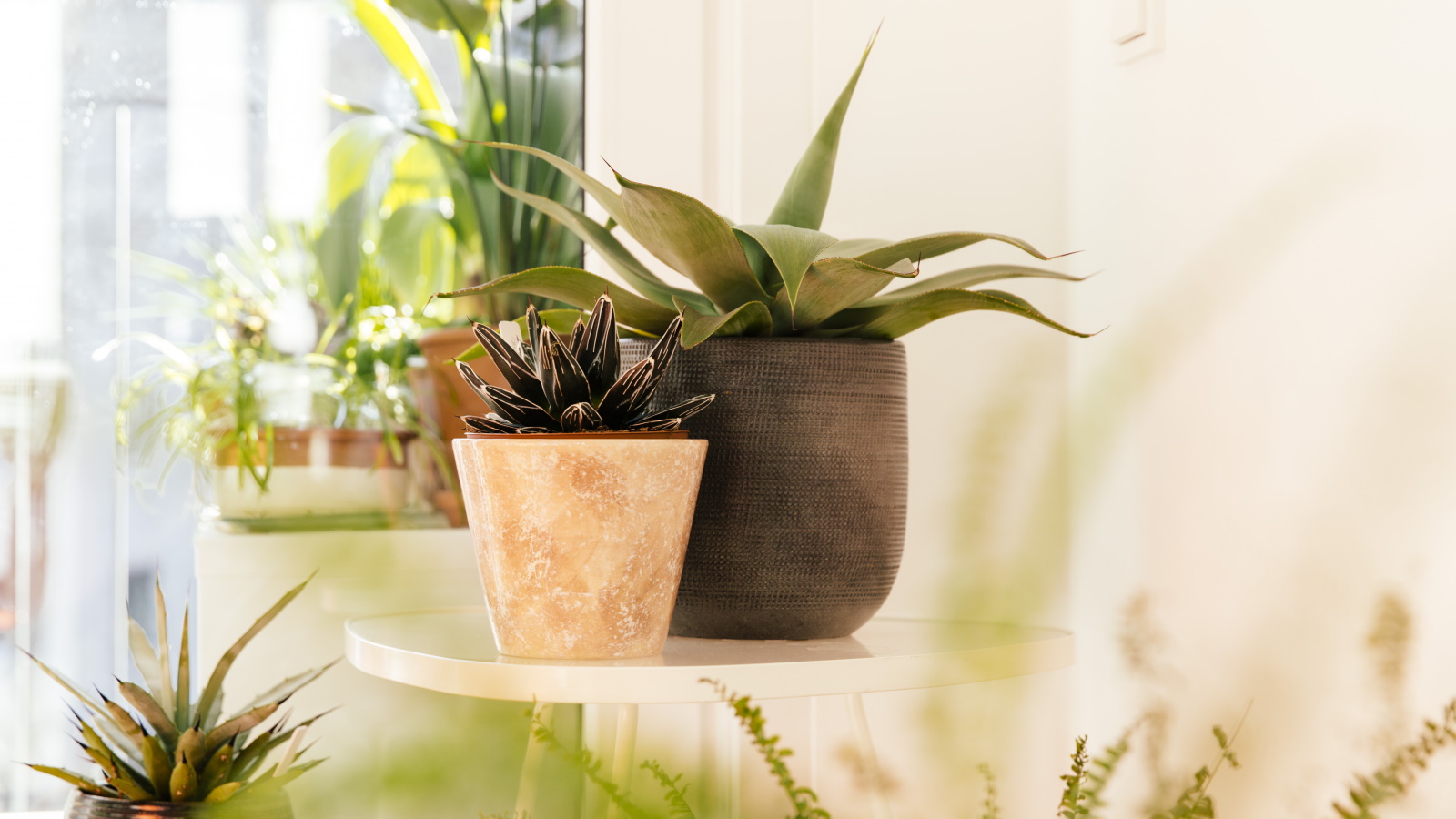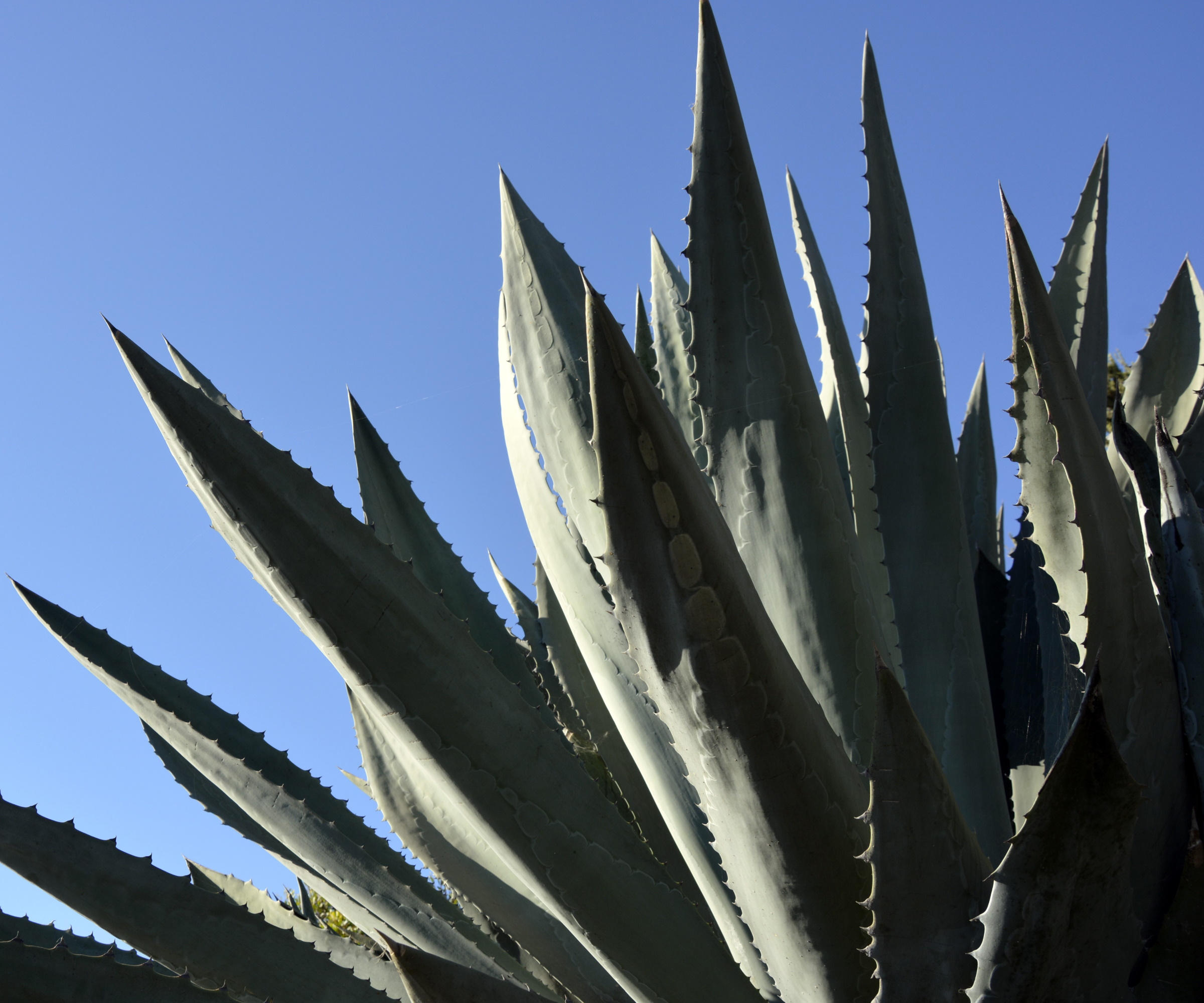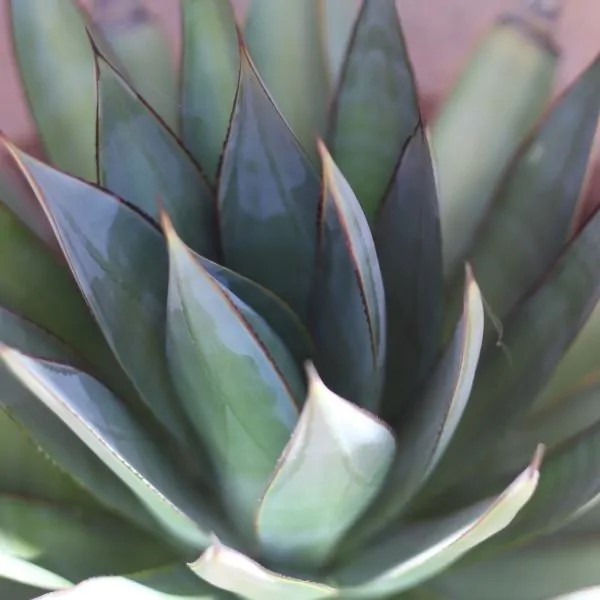Growing agave indoors – how to care for this spiky succulent
This architectural plant can add structure and drama to your indoor garden


The agave plant is a succulent well known for having thick, spiky and structural leaves. Visually striking, this plant can add drama to any outdoor space and is often thought of as a good option for a patio plant. It certainly adds a sense of summer to any situation, associated with faraway places and warmer climates.
More recently, agave plants have been incorporated into many an indoor garden, complimenting other popular and low-maintenance indoor plants. As a resilient plant, agaves prefer a warm and dry situation and are well suited to a cozy spot indoors as opposed to a wet and cold backyard.
I have grown agave as an indoor plant for many years, enjoying the structure and form of this tropical-looking plant in my apartment. Native to the dry regions of the Americas, from Mexico down to the northern regions of South America, these plants thrive in hot deserts and on the slopes of dry and sun-baked mountains, which will give readers a clue as to their light, temperature and watering preferences.
Beyond their ornamental appeal, many agave species have been cultivated for use in the production of tequila and syrups, with traditional practices dating back thousands of years in Native American societies. Whilst this story is fascinating, alcohol production is out of the scope of this article, and not recommended at home.
Read on to discover my top tips on how to care for this succulent at home.

Growing agave indoors
Agave plants are a great addition to any indoor garden, and the positive impact that houseplants can have on our health is nowadays well known, with their mood-boosting benefits as well as their ability to reduce stress.
Agaves thrive if they are kept warm and dry, and so are well suited as an indoor plant. Read on to learn my top tips for growing agave at home.
Design expertise in your inbox – from inspiring decorating ideas and beautiful celebrity homes to practical gardening advice and shopping round-ups.
Considerations before growing agave indoors

This shrub will grow outdoors in US hardiness zones 8 - 11, but by growing this plant indoors, zones 4 - 11 can try indoor cultivation with relative success.
Known for slow growth and being relatively low maintenance, agaves are well-suited for growing indoors. When thinking about how best to grow and care for your agave plant, consider first their native habitat. Agave plants thrive in warm and dry conditions, growing in arid, desert-like situations. Growing agave in a cold, dark room will cause irreparable damage to your plant. I grew my agave in a bright, sunny room, with a south-facing window, which was ideal, as this provided ample sunlight and warmth for the plant to grow.
It is best to avoid placing your agave in a location where the temperature can fluctuate, such as near a frequently used exit point. It is better to maintain a temperature range of 65-75°F, helping to recreate the conditions that this plant enjoys in its natural habitat.
If you have access to a backyard or terrace, consider moving your agave outdoors in the warmer months, when there is no risk of frost. Living in an apartment with a small balcony, I would take my agave outside for a summer vacation during the warmer months of the year. In doing so, your plant will benefit from increased light intensity, air circulation and rain water. Just remember to bring the plant back indoors when the temperature drops. This approach is recommended for most houseplants and indoor trees.
With hundreds of species, agaves are a versatile group of plants, with different shapes, sizes, and colors. Each species may have slightly different preferences, so always consult the label on your plant. With these considerations noted, indoor agave cultivation can reward you with architectural and low-maintenance greenery in your home.
Tips for growing agave indoors

- Light: Place your agave in a bright, sunny position, where it is guaranteed a good amount of sunlight every day. Avoid spaces with low light or no natural sunlight. It is a good idea to rotate your plant every few weeks, to prevent the plant from growing only in one direction and lop-sided.
- Watering: Water just once a week during the summer months, but always be sure to let the water drain away. Agave plants will not thank you for sitting in water, and this can cause irreparable damage. During winter, water once a month.
- Soil: Use a free draining potting mix, combining perlite, grit and/or sand to ensure water drains through your soil. Many store-ready mixes can be bought online, such as this Succulent Mix from Nature Hills.
- Fertilizing: Feed every four weeks during the growing season with a general house plant fertilizer, such as this indoor plant food from Walmart.com. Remember that you do not need to feed indoor plants during the fall or winter.
- Pruning: Inspect your agave plant regularly. Any wilting, yellow or brown leaves should be removed. Cut any damaged and diseased leaves to the base using clean, sharp secateurs, such as these pruning snips from Walmart.
- Additional notes: Keep in mind that many agave plants have sharp spikes, and should be kept out of reach of children and pets. From experience, agave plants do tend to get caught on clothes as you walk by, so place in your container somewhere safe and out of the way.
Shop agave plants online
FAQs
How often should I water my agave?
In summer, when temperatures are high, water your agave once a week, being sure to let the water drain away. In winter, when the temperature is much cooler, water less frequently, approximately once a month. One tip is to check the soil of your container by placing your finger and pressing down to the top 1/2 inch of the soil. If it feels dry, water your plant. If it feels too wet, check the drainage of your container and allow the soil to dry.
Growing agave plants indoors can help to add greenery to your home. Why not think of other plants to add to your collection, such as indoor ferns to add to a tropical look, or variegated indoor plants?

Thomas is a Content Editor within the Gardens Team at Homes and Gardens. He has worked as a professional gardener for both public spaces and private estates, specializing in productive gardening, growing food and flowers. Trained in Horticulture at the Garden Museum, he has written on gardening and garden history for various publications, including The English Garden, Gardens Illustrated, Hortus, The London Gardener and Bloom. He has co-authored a Lonely Planet travel book, The Tree Atlas, due out in 2024.


